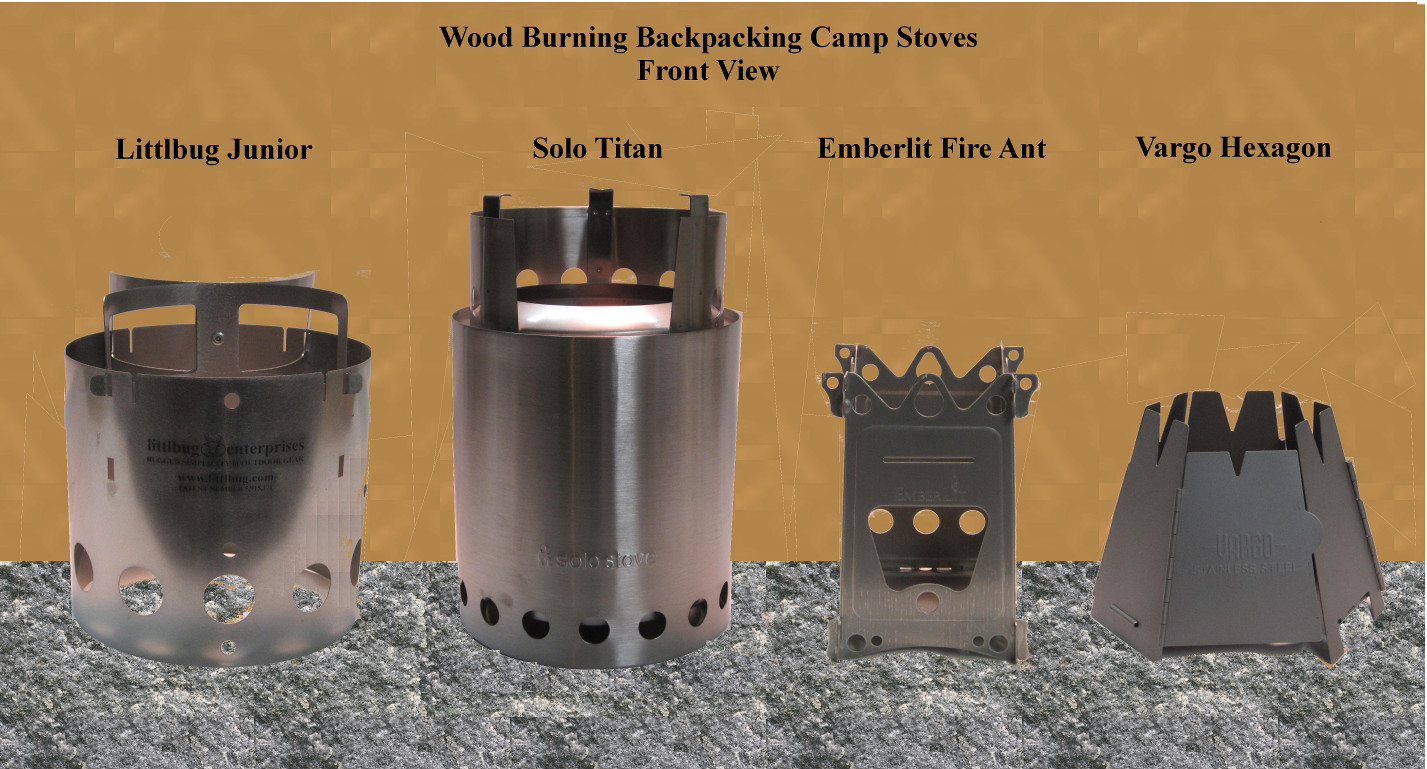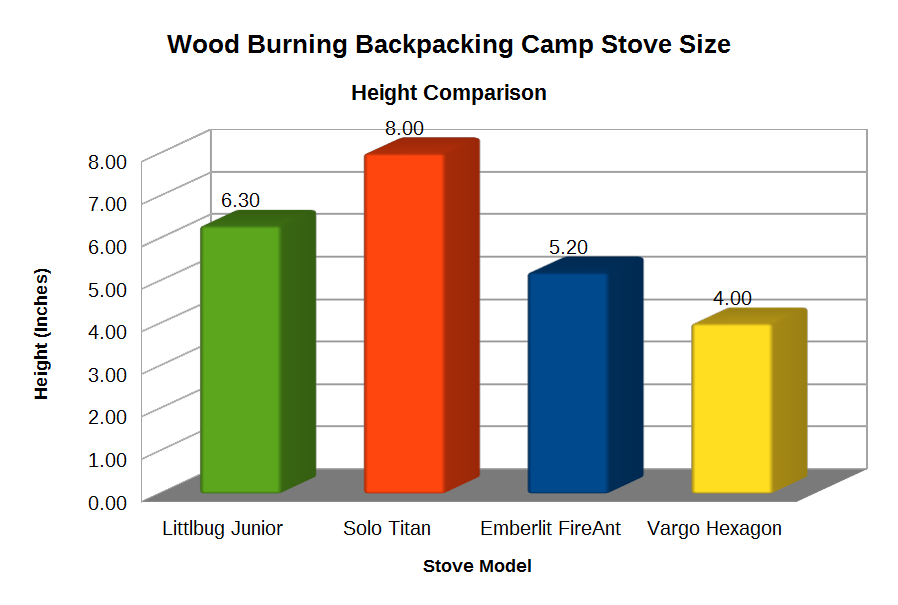- Home
- The Littlbug Blog
- Comparing Wood Burning Backpacking Camp Stoves | What's Important and Why It Matters (Part Two)
Recent Posts
Comparing Wood Burning Backpacking Camp Stoves | What's Important and Why It Matters (Part Two)
Posted by on
In this collection of posts I am presenting 20 considerations that are important when choosing your wood burning backpacking camp stove and showing how these considerations are dealt with in four different stove designs available on the market today.
In this post I will compare the assembled size of the Littlbug Junior, Solo Titan, Emberlit FireAnt and Vargo Hexagon wood burning backpacking camp stoves.
Getting ready to buy a stove and want to read the complete article now? Just send us your request via our contact page and we will send it to you.
Consideration 3 - Assembled Size: The size of your stove influences how it performs, how often you have to refuel it, how convenient it is to cook with, how easy it is to transport, how much it weighs, the size pots that you can use…
Performance: Stoves are carried as a source of heat. A large stove is capable of providing more heat than a small stove. This will determine boil time. More on boil time in consideration 7.
Refueling: All stoves require a source of energy. When that source is depleted the stove goes out. With all wood burning camp stoves, you do not need to be concerned about running out of fuel but you do have to make sure you keep enough wood in the stove to keep the fire going. The size of the stove determines the size of the firebox. Here, large is good. The longer the stove will burn without tending, the more time you can spend doing other tasks around camp. Take it from my experience – it is frustrating to go back to your stove expecting a pot of hot water only to find that the stove went out. More on firebox size in consideration 2.
Convenience: Cooking on a stove with a large top is more convenient. It gives you more cooking options (think pot sizes), spreads the heat over a larger area which will reduce hot spots (uneven heat beneath your pot is an irritant if you ever try to do more than boil water) and provides a more stable cooking platform (always nice to keep from dumping your dinner). More on stability in consideration 6.
Transport: Here small is better. You only have so much room for all your gear. Ideally, your stove should be as large as possible when assembled and as small as possible when stowed for transport. More on how well the stoves pack in consideration 4.
Weight: You increase the size and you're going to increase the weight unless you go to a thinner or more expensive material. More on weight in consideration 5.
Pot Size: A large pot on a small stove is a recipe for disaster, not to mention the frustration and inconvenience of trying to cook with such a combination. More on pot size in consideration 11.
Summing it up: If you're looking for a hot stove that's convenient and safe to cook on, light weight and doesn't take up a lot of space in your pack – then size definitely matters.
Backpacking Camp Stove Height Comparisons

Figure 3-1

Figure 3-2
Backpacking Camp Stove Top Width Comparisons

Figure 3-3

Figure 3-4
Littlbug
Junior
Solo
Titan
Emberlit
FireAnt
Vargo
Hexagon
Height
6.3 in
8.0 in
5.2 in
4.0 in
Top
Width1
5.5 in
4.5 in
4.4 in
3.4 in
Littlbug Junior
Solo Titan
Emberlit FireAnt
Vargo Hexagon
Width1
1 Top width measured at widest point.
Table 3
In my next posting of Comparing Wood Burning Backpacking Camp Stoves | What's Important and Why It Matters, I will be discussing the packed size and shape of your stove. In your search for the backpacking stove that's right for you, I hope you end up choosing a Littlbug Stove! You can check out our products here.

 Loading... Please wait...
Loading... Please wait...








